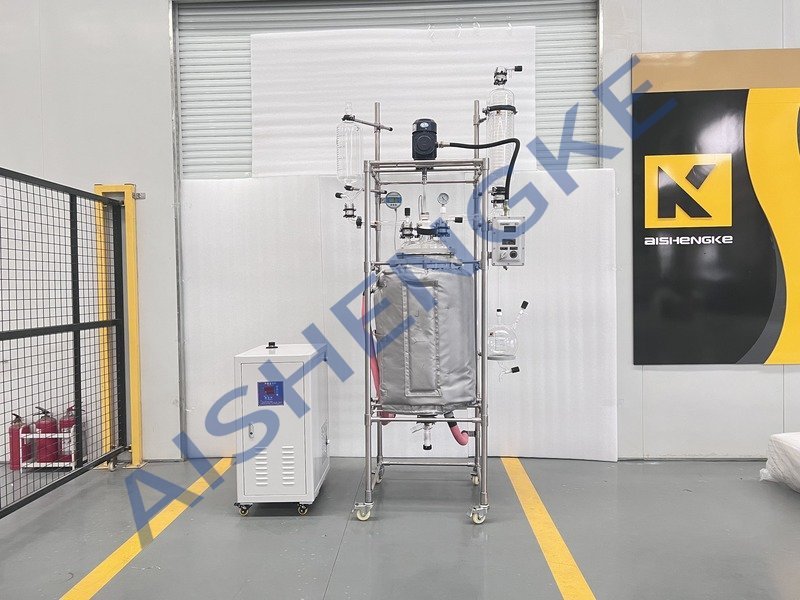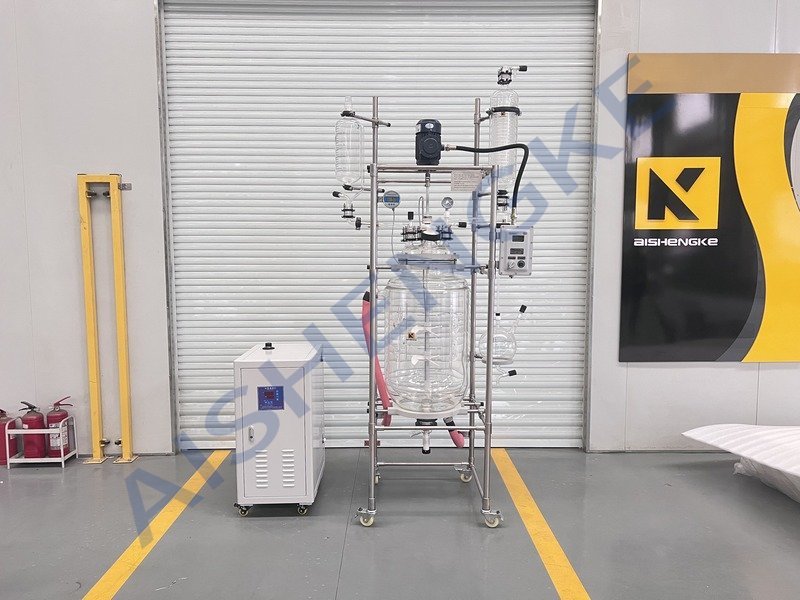What are the uses of glass reactors?
Release Time:
2023-01-04
Pageviews:
The use of glass reactors, glass reactor accessories are mostly high borosilicate glass products, which can be used with low-temperature cooling circulators, high-temperature heating circulators, or high-low temperature integrated machines. Depending on the method, you can choose normal pressure or constant pressure dripping Funnel; depending on the amount added, you can choose 1L-5L or larger volume.
The material of the double-layer glass reactor is high borosilicate glass, which has excellent physical properties and stable chemical properties. The operation is relatively stable during the frequency conversion and speed regulation stirring process, and no electric spark will be generated even if the torque is large. The working temperature range is -80 ℃ to 200 ℃, and the PTFE sealing fittings are consistent with the fittings used in the laboratory. The temperature sensor probe has the advantages of high temperature, low error and stable working state.
The overall performance of the double-layer glass reactor is relatively good, and it has a wide range of uses. The interlayer of the double-layer glass reactor can be used for high temperature reaction (high temperature can reach 300 ℃), and low temperature reaction (low temperature can reach -80 ℃); at the same time, it can be vacuumed and negative pressure reaction. It can carry out stirring reaction at room temperature, high temperature reaction, negative pressure vacuum distillation reaction, separation and extraction, distillation reflux reaction, and concentration reaction.
The design of the double-layer glass reactor is different from that of the single-layer glass reactor. The body of the double-layer glass reactor is divided into two layers. The middle part of the outer layer and the inner layer is called an interlayer. The heating of the double-layer reactor is realized through the interlayer. , the operation steps are to connect the reaction kettle to the interlayer of the circulating oil bath to feed the heat transfer oil, and then plug in the power supply to heat the material. The same is true when doing low temperature reactions, just change the solvent in the interlayer to low That's fine. The interlayer can make the heating of the material more uniform, and it is also convenient to observe the stirring reaction process of the material. Through the interlayer, the reactor can not only complete the high-temperature experiment, but also complete the low-temperature reaction. All high-temperature or low-temperature reactions are completed in the interlayer, so the temperature The control is more precise and the heating is faster than a single layer.
There are two kinds of glass reaction kettles: laboratory and pilot scale. The volume of the kettle body ranges from 1L to 200L. You can also customize explosion-proof type, lifting type, and stainless steel type. For detailed product information and technical parameters, contact us, professional sales staff Will focus on answering for you.


Latest News
2024-09-03
Abstract: Oil deacidification is an important step in food processing, which aims to remove free fatty acids in oil and improve its quality and stability. Traditional deacidification methods have some limitations, such as low efficiency, high energy consumption, and loss of nutrients. In recent years, molecular distillation technology has gradually attracted attention as a new deacidification method. This article will introduce the application of molecular distillation in oil deacidification, including the principle, operation process and advantages, and focus on the outstanding advantages of Aishengke in molecular distillation technology.
Vitamins are products that are closely related to people's lives, and have become one of the main bulk products in the international pharmaceutical and health care products market. The amount of vitamin E is the largest, followed by vitamin A, vitamin C, vitamin D and so on. With the growth of economy and the improvement of people's living standards, the demand for vitamin products will further increase, and people's requirements for their quality and grade will also further increase. Therefore, as an important separation technology in the production of many vitamins, molecular Distillation technology will also play an increasingly important role in the vitamin industry.
Glyceryl monostearate (GMS), abbreviated as monoglyceride, is produced from natural vegetable oils and fats. The active ingredient is purified by molecular distillation technology to more than 90%, also known as molecular distillation monoglyceride. It is the most widely used food Additives, safe to use in the production and processing of food, medicine, plastics, etc., account for more than half of the emulsifier consumption in the market.
The principle of molecular distillation is to make use of the different degrees of affinity between different molecules. By controlling the conditions such as temperature and pressure, the mixture begins to vaporize. Different components in the vapor form liquids in the condenser and are separated according to their boiling points. This distillation method not only has a good separation effect, but also can be repeatedly separated and purified, and is widely used in chemical, pharmaceutical and other fields.
Molecular distillation is a common chemical method used to separate and purify compounds. In the pharmaceutical industry, molecular distillation is widely used in pharmaceutical purification. This article will focus on the application of molecular distillation in pharmaceutical purification and provide some specific examples.
Laboratory vacuum distillation equipment has undergone significant advancements in recent years, driven by the need for higher efficiency, improved safety, and enhanced user experience.
Global recruitment of distributors
If you recognize the brand, technology, products and market prospects of Aishengke, we look forward to establishing a strategic partnership with you for win-win cooperation and development. Looking forward to your joining!

